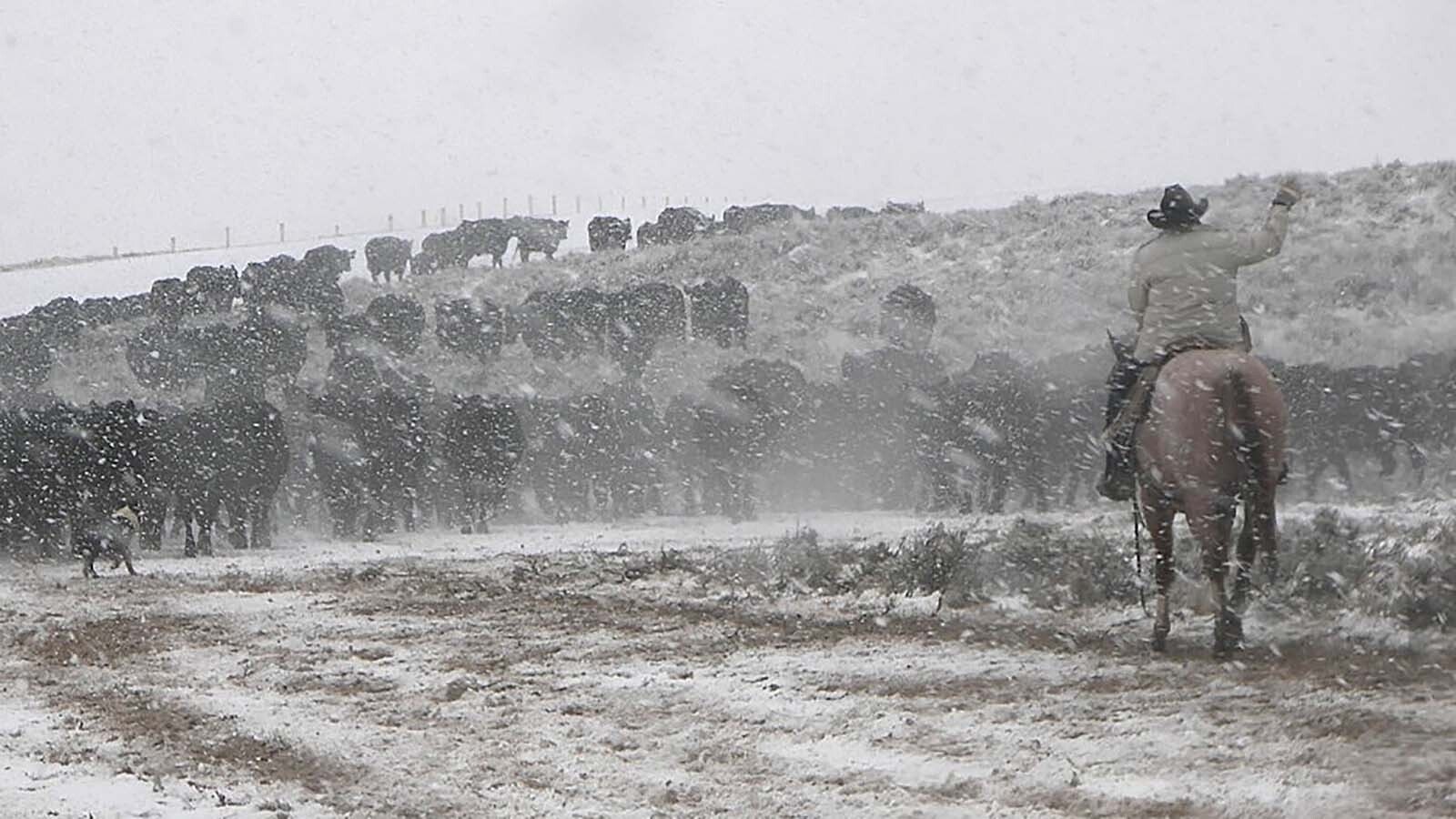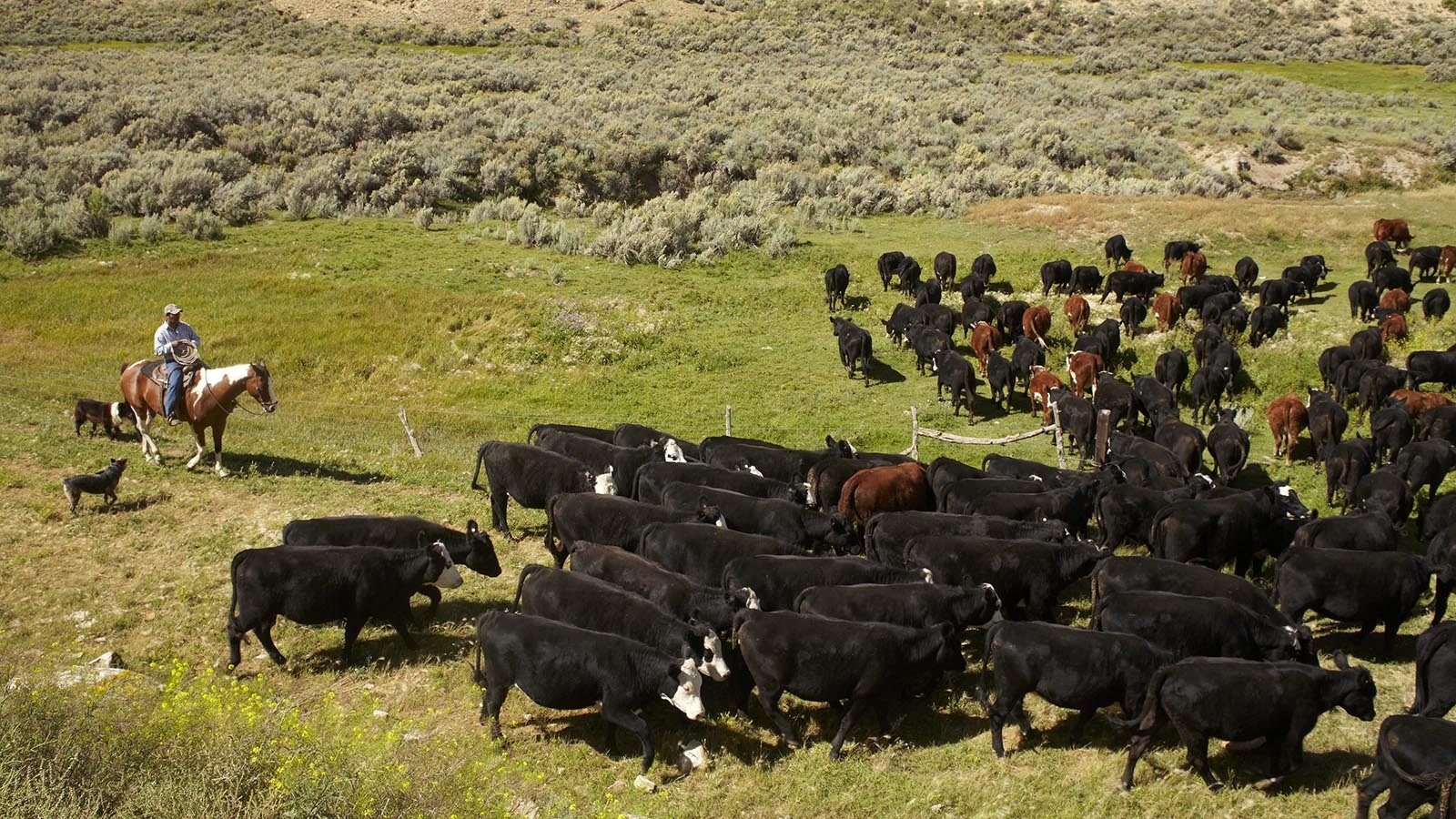The Wyoming Game and Fish Department is employing crime-solving technology to count the black bears in the state.
Using DNA analysis of hair samples gathered from “snares” located in strategic spots in several Wyoming mountain ranges, Game and Fish researchers are able to determine how many individual black bears inhabit each region, which allows the department to better manage the species.
Dan Bjornlie is a large carnivore biologist for the department and the full-time biologist in charge of bear population monitoring work.
Bjornlie told Cowboy State Daily that researchers have been trying for over a decade to set up a project which will allow for baseline population monitoring for large carnivores of all kinds.
“We’ve already got a pretty robust grizzly bear and wolf monitoring program going on right now,” Bjornlie said. “But we didn’t really have much for black bears and mountain lions. So I’ve been pushing for trying to get some black bear monitoring going on since probably 2010.”
Bjornlie said that DNA “hair snare” population monitoring work for bears is widely used now, in part because the process is not very labor intensive compared to some other methods available.
“The hair snares are actually a little corral that we set up,” he said. “It’s a ring of barbed wire that we put around some trees, a circle or a square of 20 feet by 20 feet or so. We put the wire about knee high off the ground, and we put some scent in the middle. It’s not a bait or anything, a bear doesn’t get a reward for coming into it, but it’s a curious smell.
“And then when bears come by, they smell it and they cross that barbed wire to go in and investigate that smell,” he continued. “And when they do, the bear’s hair gets snagged on the wires, then we go out and we collect the hair from those barbs once a week and put them in little sample envelopes. And at the end of the season, we send them into a lab.”
Bjornlie said the lab can distinguish between individual bears by the hair samples if enough of a root is left on the hairs.
“And then they can tell us how many individual bears … are detected from all those different hair samples that we collected through the summer,” he said. “And so with that, we can take the information on how many individuals we caught and the location and the time where they were detected. And that gives us some spatial information that can get us an idea of density and abundance for that population.”
Bjornlie said the department started the project in 2015 in the Greys River area of the Wyoming Range on the western side of the state – first doing radio collar work, then following up with hair snares.
In 2018, the department set up collection sites in the Sierra Madres, and has been able to determine the health of the black bear populations in those two areas.
“The Grays River area was a little bit lower than we thought it was originally,” Bjornlie said, “and I think it was six or seven bears per 100 square kilometers.”
He reported that given the levels of precipitation in the area, the Game and Fish Department expected population densities to be higher than what they found – so researchers used that information to slightly reduce the harvest limit in the Grays River for a while, letting that population bounce back a little bit from some of the hunting pressure.
“But then the next one we did, in the Sierra Madres, we found that the densities and the abundance were actually a little bit higher than what we would expect,” Bjornlie said. “And so with that information, during the season setting process, we were able to increase the harvest limits in the Sierra Madres a little bit to allow more hunter opportunities, because the population was actually doing quite well and the density soared a little higher than we thought they’d be.”
Bjornlie said the department this summer set up collection sites in the Big Horn Mountains, but it hasn’t received results from the lab yet. When that happens, though, he said that the department will be able to directly apply their findings.
“We’re able to go in the next season setting cycle for black bear hunting seasons and say, based on our information, densities are about this, which means the abundance should be about this,” he explained. “And therefore, we’re taking whatever percentage of the population during the hunting season, and can adjust it to something that’s sustainable, but still allows good hunter opportunity.”
Bjornlie added that the project is relatively inexpensive, compared to other monitoring systems the department has used.
“We’re able to do most of the fieldwork itself with just a crew leader and then one technician, and a little bit of help from some of our other folks here and there,” he said. “And it was actually pretty easy for two technicians to cover the entire Sierra Madre area through the whole summer, and those people are people that we normally have on staff anyway.”
The only cost increase to speak of, according to Bjornlie, is the lab costs, and those – depending on the number of samples – can range from $15,000 to $30,000.
“When you compare that to the amount of money that’s spent on some of our big game monitoring, it’s a drop in the bucket,” he said.
Bjornlie noted that the next project will be in the Laramie Range this summer.
“This is one area that we’ve been getting a lot of interest in from the Casper and Laramie regional folks, because it’s a really tough area to get a handle on for black bears,” he said. “There’s actually a pretty robust black bear population in there, and we’ve really struggled with how to monitor this area in the past and what limits we should set for hunting seasons. It’s also got a lot of private lands, so it’s kind of hard for us to access to do some of our more traditional monitoring work.”
Bjornlie noted that this type of monitoring works well for black bears, but hasn’t been put into wide use for grizzlies.
“We already have an alternative monitoring protocol that has been established for decades,” he said. “That involves observations of females with cubs of the year, and expands that into an estimate for the Greater Yellowstone grizzly bear population.
“But the other problem has always been, it’s just a really large area, and it’s a really remote area,” he continued. “And so the logistics of doing it would be substantially greater than any of these smaller black bear projects that we’re working on. We’d cover a huge area, some of it would require backcountry work that would involve people on horseback for weeks at a time, so it would require a much larger crew – multi state, multi-jurisdictional coordination, all that kind of thing. So we just haven’t quite got there yet.”





